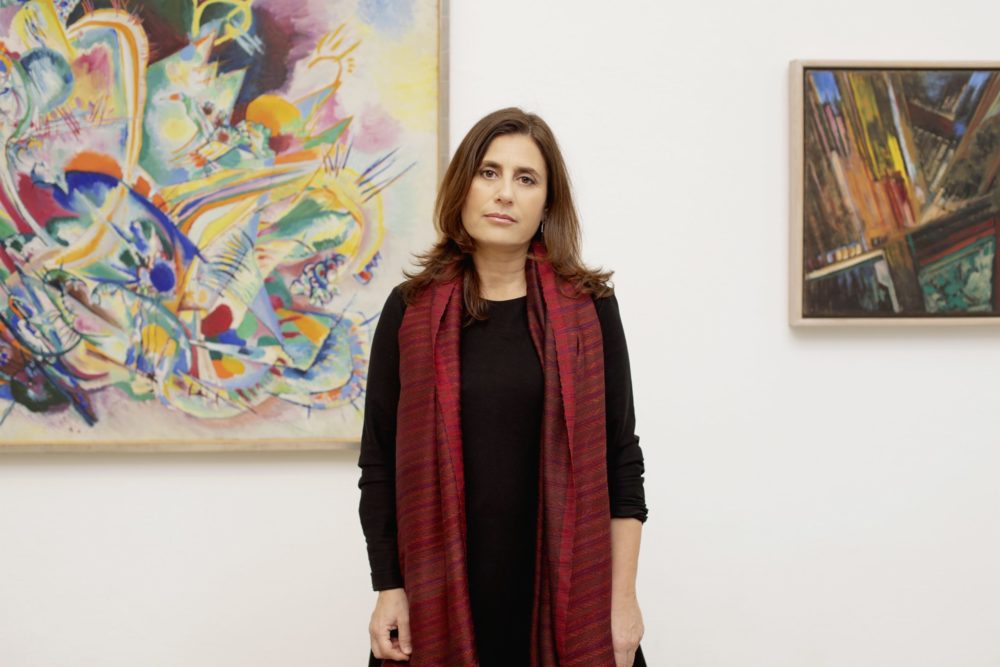Orna Tamir Schestowitz has always been fascinated by the visual interaction of material, color, and composition—even when it comes to simply setting the table. With experience as a journalist and editor focusing on design and architecture, the Israel-based artist and curator is also a collector. She sees design as a dynamic aspect of the art world, and finds freedom in the possibilities of what she describes as an environment at play.
Recently, we checked in with Schestowitz to see how she’s doing during the COVID-19 pandemic. She said, “The biggest element in this challenging period is dealing with uncertainty. I have to say that alongside the worries it brings, I also find some silver linings, from staying in, thinking about our post-corona world, and reflecting on different focus areas. My imagination is being stimulated constantly, contributing to my creation. I wish us all good health and to keep caring about and for each other.”
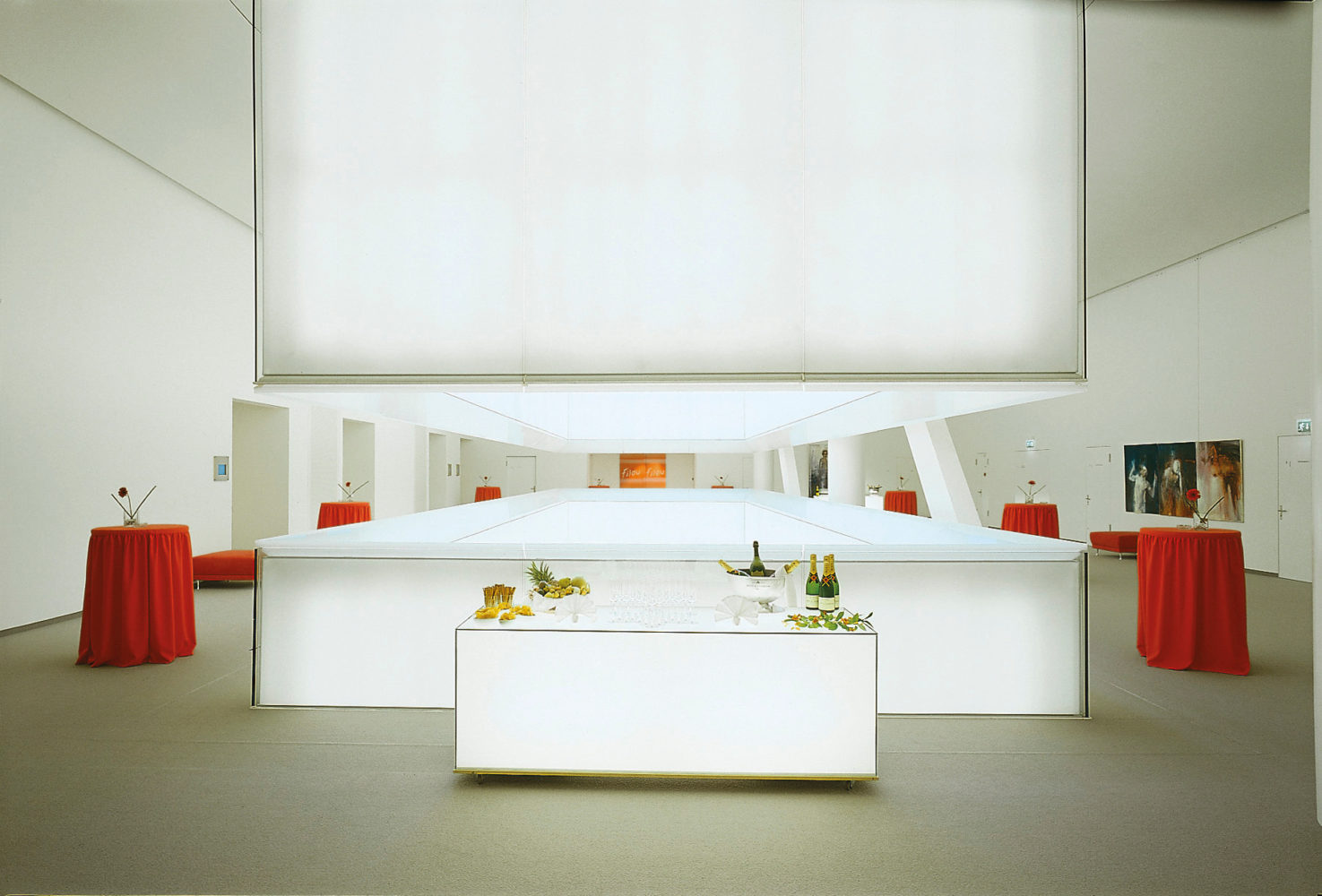
Courtesy of Hyperion Hotel Basel.
For Whitewall‘s spring 2020 Art Issue, we spoke with Schestowitz about her collection as well as how her ongoing “Seeds of Heritage” project, a suite of 70 granular clay bowls featuring photos of Israel-grown produce, pays homage to her land and history.
WHITEWALL: How would you describe your method? What do you enjoy about working with ceramics?
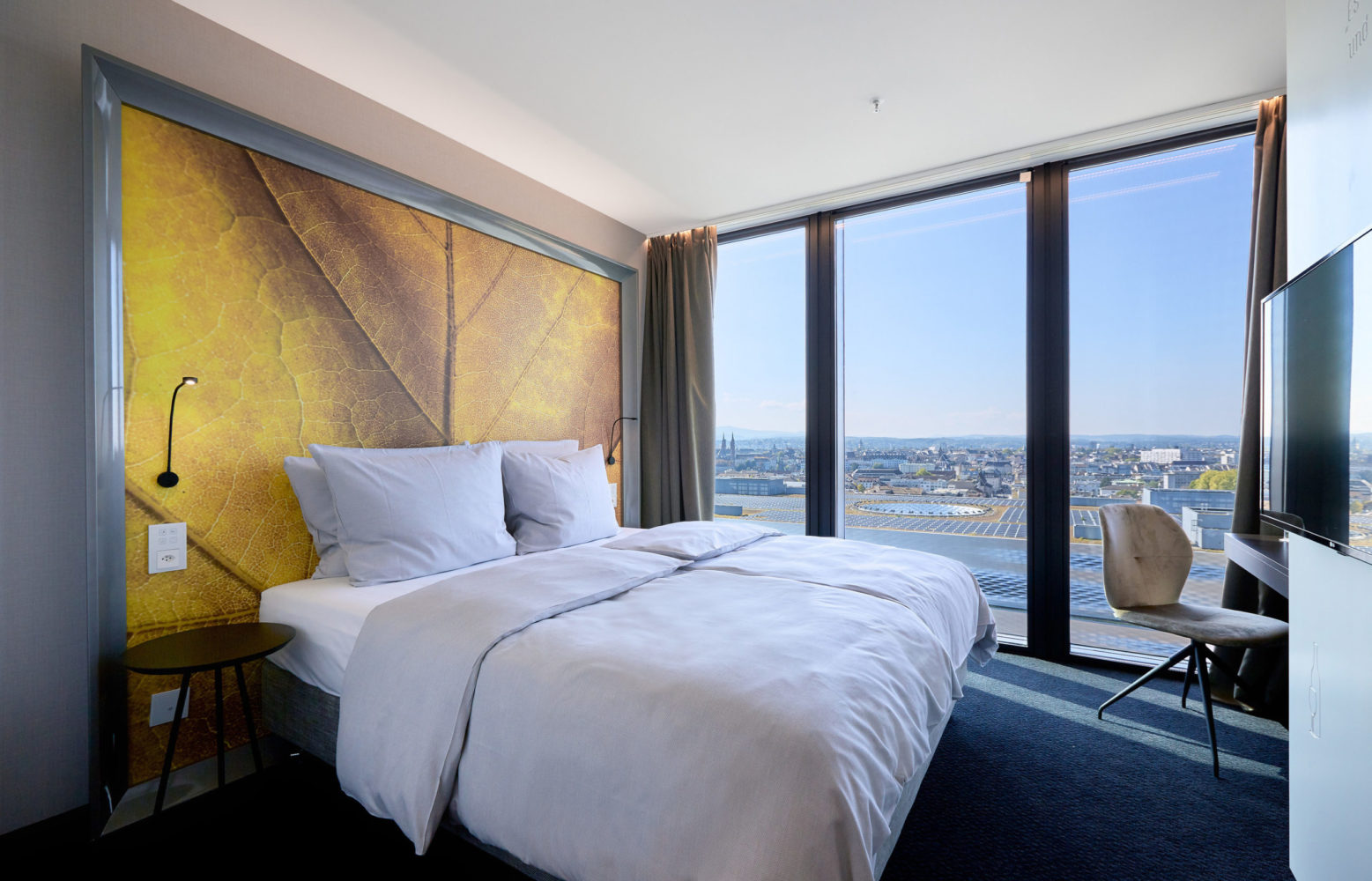
Courtesy of Hyperion Hotel Basel.
ORNA TAMIR SCHESTOWITZ: I see myself as a multidisciplinary artist in constant development of my creative process and means of expression. My choice of ceramics is driven by a need to create vessels, a womblike container that can hold a multitude of microcosms. Working with ceramics forces you to slow down, challenges you to leave fingerprints, to employ ancient, native techniques. Ceramic pottery was everywhere in ancient Israel’s life, and in working with ceramics, I’m operating within a field that links contemporary art with an ancient tradition of knowledge and material. My works are steeped in respect to their native origins, our past and heritage.
WW: Can you tell us about the origins of “Seeds of Heritage,” and what you are currently working on?
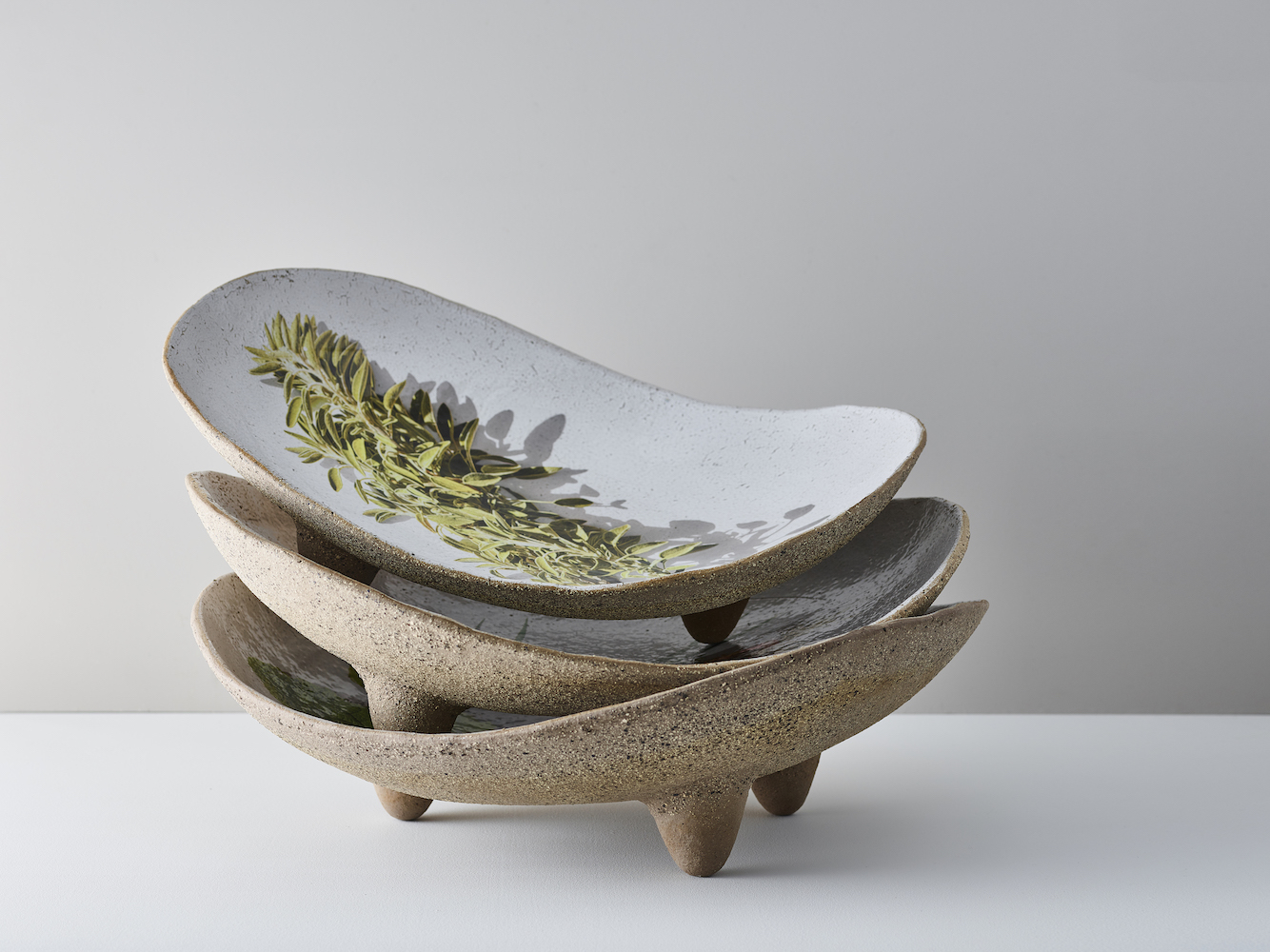
Seeds of Heritage by Orna Schestowitz, photo by Dan Perez.
OTS: I was looking for a way to reconnect to my roots and spark a dialogue on the relationship between man and nature. The shape of the bowls offers a nesting place, whether for nourishment or ideas. It was clear to me that I wanted to fill these bowls with our heritage, our native assets, sprung from local soil, connected to our land and region. And at the same time, they are serving dishes, vessels with which to feed, to nourish those you love with the actual, present produce of the land.
All the photographed plants that appear on the bowls were cultivated from heirloom seeds that evolved over the generations without genetic modification or human engineering. Each bowl presents a sample of produce harvested from Israeli chef Erez Komarovsky’s organic farm in the Galilee and photographed by Israeli photographer Dan Perez—a tribute to the natural cycle of life and an agricultural legacy of thousands of years.
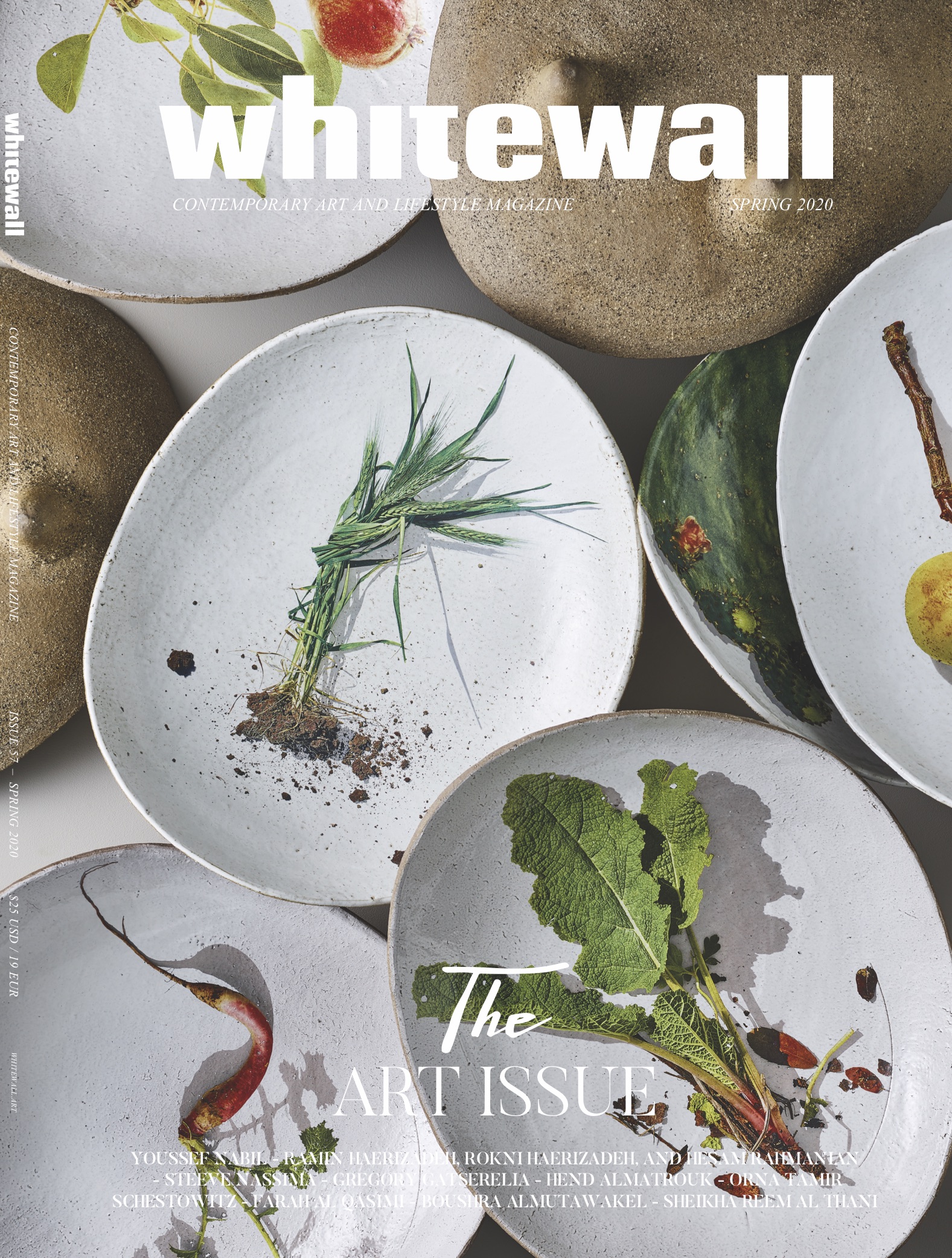
Whitewall’s Spring 2020 Art Issue Cover featuring Orna Tamir Schestowitz.
The “Seeds of Heritage” project continues to keep me busy, experimenting with combinations of image and text, print, calligraphy, and video art. I am interested in further stripping the image of color and outside noise and continuing to research the world of material and glaze.
WW: Can you tell us about your personal art and design collection? When did you start collecting?
OTS: I started collecting art 40 years ago, small pieces that I could afford. Later, when I married my husband, we used the money we got as a wedding gift, every last cent of it, to buy a Zaritsky painting. To this day, many years and art purchases later, that Zaritsky is the beating heart of the house, a sun shining on our family. You can say that my humble collection reflects my passion and personality—Tsibi Geva, Raffi Lavie, Ya’acov Dorchin, Yechiel Shemi, Yair Garbuz, Larry Abramson, Moshe Gershuni, and Nahum Gutman, all displayed alongside sculptures and paintings made by my children. Like any proud mother, I have kept their artwork, and the ceramic sculptures my son made when he was five are carefully and lovingly positioned next to those of Ya’acov Dorchin.
I’m also an avid design collector. I’m drawn to the raw, old, and authentic design that uses warm materials like wood, straw, and rope. My frequent travels to France have instilled in me an interest in midcentury design and the subdued modernism of the 1950s and 1960s. My fascination with the overwhelming range and breadth of Le Corbusier’s work also led me to other designers who made a distinct mark, like architects and decorative artists Pierre Jeanneret and Charlotte Perriand.
As with every other aspect of my life, I’m a fan of the mix-and- match approach, placing a modern stainless steel island by an old dining area, an African dresser next to an Eames chair. I don’t believe in design dos and don’ts; I believe only in an intuitive harmony of space, color, and light.
WW: Can you tell us about the art and design community in Israel today? What is exciting about it at the moment?
OTS: More and more Israeli artists are gaining international exposure, with their pioneering work increasingly resonating in the wider public sphere— veteran artists like Ron Arad, Ya’acov Dorchin, Micha Ullman, Sigalit Landau, and Erez Israeli. Michal Rovner says that while in Israel she’s regarded as an international artist, abroad she’s seen as an Israeli artist. And I can understand that, because the association with place, history, and politics is inevitable. Her video art can be viewed as universal, and yet I do see the Israeli roots in it. This tension between the local and the global is inherent to contemporary Israeli art, which is diverse and eclectic, with a constant flow of new artists exhibiting both locally and internationally.





